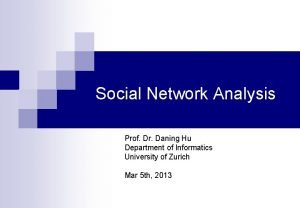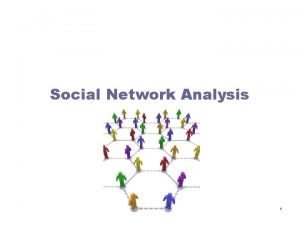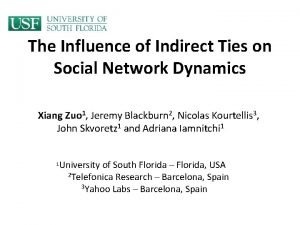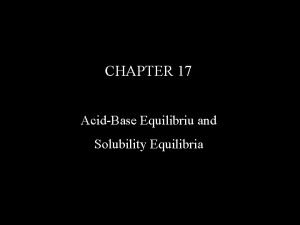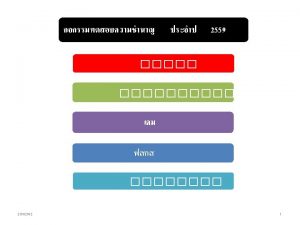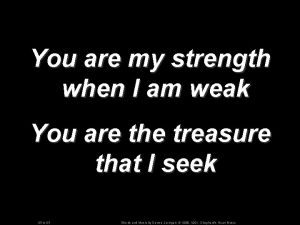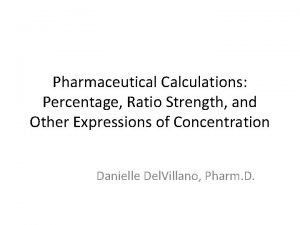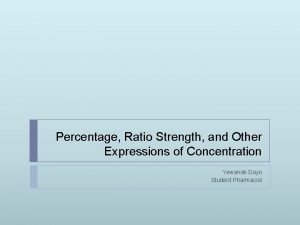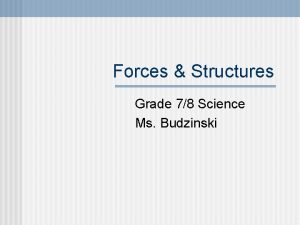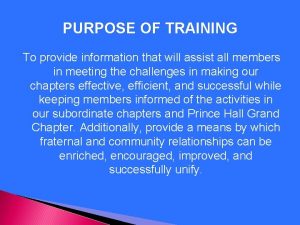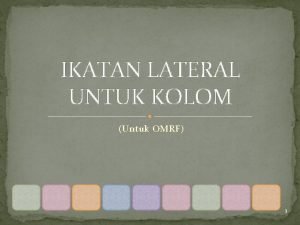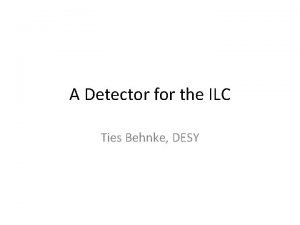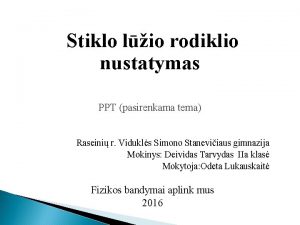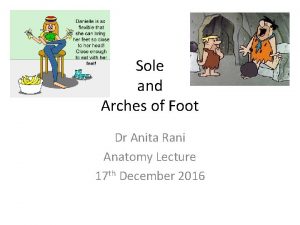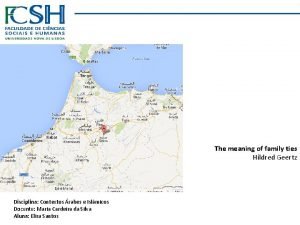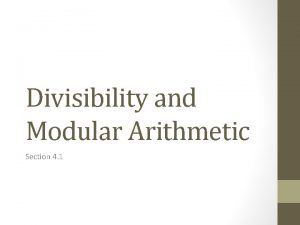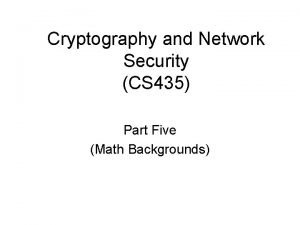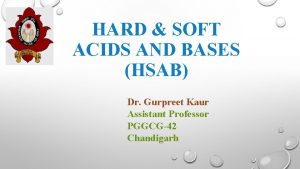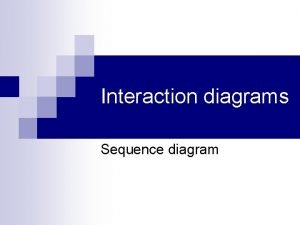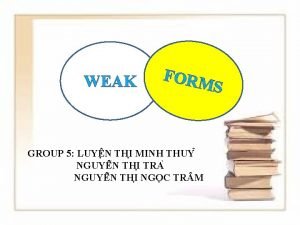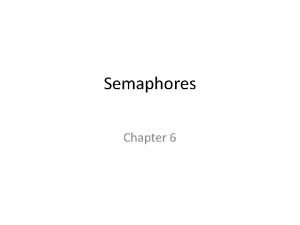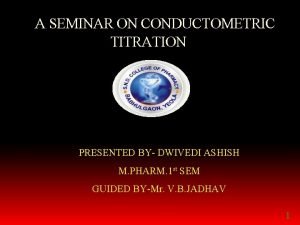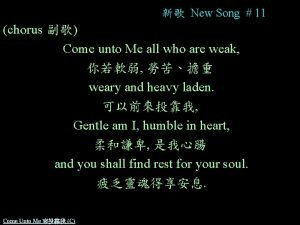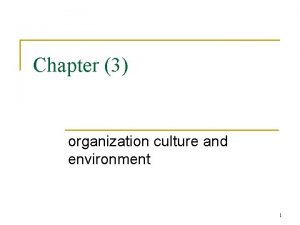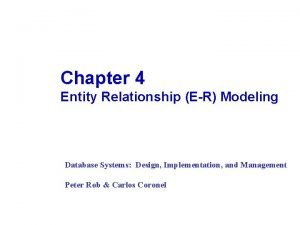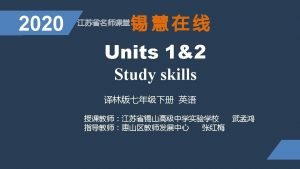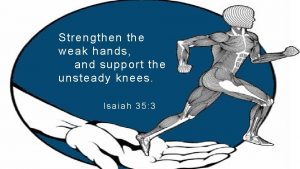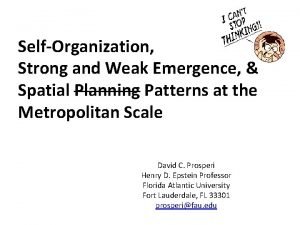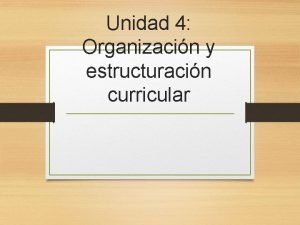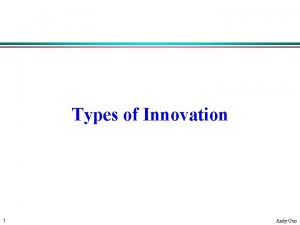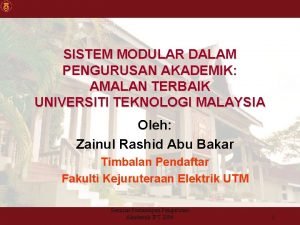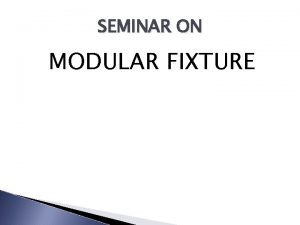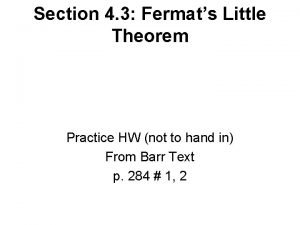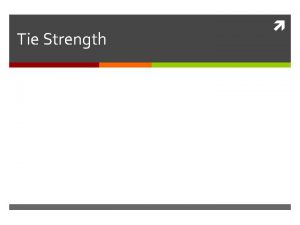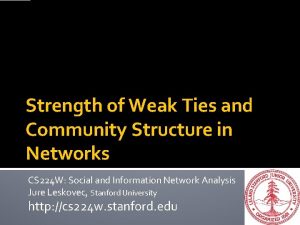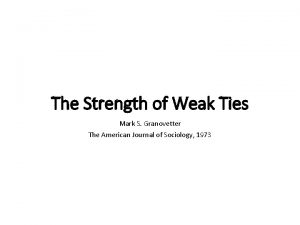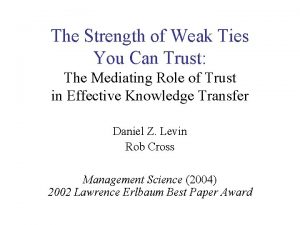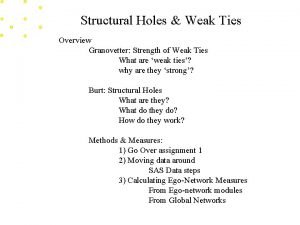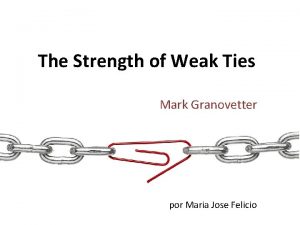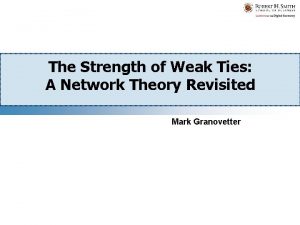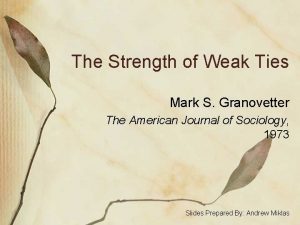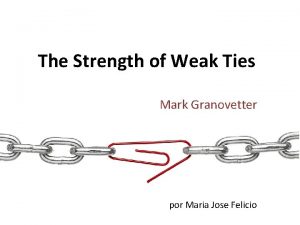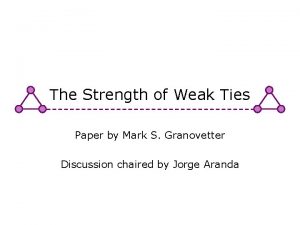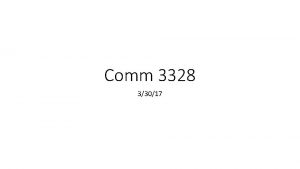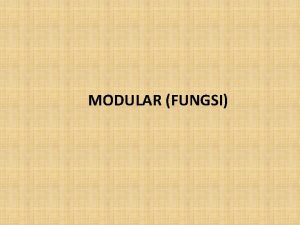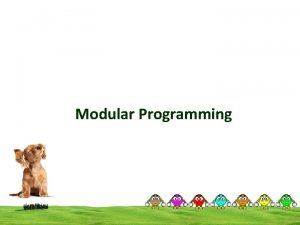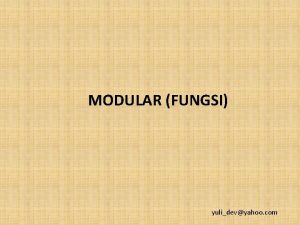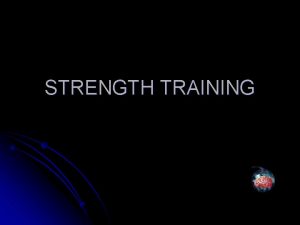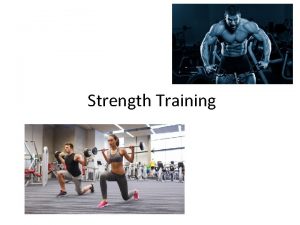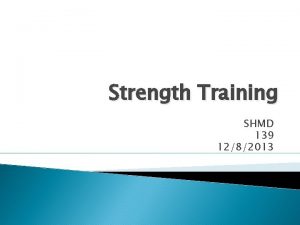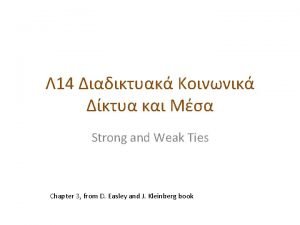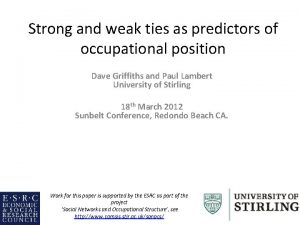Lecture 3 Strength of Weak Ties and Modular


![Strength of Weak Ties [Granovetter ‘ 73] �How people find out about new jobs? Strength of Weak Ties [Granovetter ‘ 73] �How people find out about new jobs?](https://slidetodoc.com/presentation_image_h2/b838c869b73eb7853629810dd75f4fb1/image-3.jpg)
![Granovetter’s Answer [Granovetter ‘ 73] �Two perspectives on friendships: § Structural: § Friendships span Granovetter’s Answer [Granovetter ‘ 73] �Two perspectives on friendships: § Structural: § Friendships span](https://slidetodoc.com/presentation_image_h2/b838c869b73eb7853629810dd75f4fb1/image-4.jpg)











![Structural Holes: Network Constraint �The “network constraint” measure [Burt]: § To what extent are Structural Holes: Network Constraint �The “network constraint” measure [Burt]: § To what extent are](https://slidetodoc.com/presentation_image_h2/b838c869b73eb7853629810dd75f4fb1/image-16.jpg)





![[Backstrom et al. KDD ‘ 06] Group Formation in Networks �In a social network [Backstrom et al. KDD ‘ 06] Group Formation in Networks �In a social network](https://slidetodoc.com/presentation_image_h2/b838c869b73eb7853629810dd75f4fb1/image-22.jpg)

![[Backstrom et al. KDD ‘ 06] P(join) vs. # friends in the group Live. [Backstrom et al. KDD ‘ 06] P(join) vs. # friends in the group Live.](https://slidetodoc.com/presentation_image_h2/b838c869b73eb7853629810dd75f4fb1/image-24.jpg)

![Connectedness of Friends [Backstrom et al. KDD ‘ 06] �Competing sociological theories: § Information Connectedness of Friends [Backstrom et al. KDD ‘ 06] �Competing sociological theories: § Information](https://slidetodoc.com/presentation_image_h2/b838c869b73eb7853629810dd75f4fb1/image-26.jpg)

![So, This Means That [Backstrom et al. KDD ‘ 06] �A person is more So, This Means That [Backstrom et al. KDD ‘ 06] �A person is more](https://slidetodoc.com/presentation_image_h2/b838c869b73eb7853629810dd75f4fb1/image-28.jpg)
![Group Formation: Other Theories [Purohit et. al. ICWSM 2014] �Social Cohesion Theory § Joins Group Formation: Other Theories [Purohit et. al. ICWSM 2014] �Social Cohesion Theory § Joins](https://slidetodoc.com/presentation_image_h2/b838c869b73eb7853629810dd75f4fb1/image-29.jpg)



![Method 1: Girvan-Newman [Girvan-Newman ‘ 02] �Divisive hierarchical clustering based on the notion of Method 1: Girvan-Newman [Girvan-Newman ‘ 02] �Divisive hierarchical clustering based on the notion of](https://slidetodoc.com/presentation_image_h2/b838c869b73eb7853629810dd75f4fb1/image-33.jpg)












![Theory of Structural Balance �Start with the intuition [Heider ’ 46]: § Friend of Theory of Structural Balance �Start with the intuition [Heider ’ 46]: § Friend of](https://slidetodoc.com/presentation_image_h2/b838c869b73eb7853629810dd75f4fb1/image-46.jpg)

![Local Balance � Global Factions �Balance implies global coalitions [Cartwright-Harary] �Claim: If all triangles Local Balance � Global Factions �Balance implies global coalitions [Cartwright-Harary] �Claim: If all triangles](https://slidetodoc.com/presentation_image_h2/b838c869b73eb7853629810dd75f4fb1/image-48.jpg)














![[Leskovec et al. CHI ‘ 10] Real Large Signed Networks �Each link A� B [Leskovec et al. CHI ‘ 10] Real Large Signed Networks �Each link A� B](https://slidetodoc.com/presentation_image_h2/b838c869b73eb7853629810dd75f4fb1/image-63.jpg)

![[CHI ‘ 10] Global Factions: Embeddedness �Embeddedness of ties: Epinions § Positive ties tend [CHI ‘ 10] Global Factions: Embeddedness �Embeddedness of ties: Epinions § Positive ties tend](https://slidetodoc.com/presentation_image_h2/b838c869b73eb7853629810dd75f4fb1/image-65.jpg)
- Slides: 65

Lecture 3 Strength of Weak Ties and Modular Structure (Communities) Srinivasan Parthasarathy Adapted and Extended Slides from Ymir Vigfusson and Jure Leskovec Who in turn adapted it from several others (details in individual slides)

Networks: Flow of Information �How does information flows through the network? �How do different nodes play structurally distinct roles in this process? �How do different links (short range vs. long range) play different roles in diffusion? 9/19/2021 Jure Leskovec, Stanford CS 224 W: Social and Information Network Analysis, http: //cs 224 w. stanford. edu 2
![Strength of Weak Ties Granovetter 73 How people find out about new jobs Strength of Weak Ties [Granovetter ‘ 73] �How people find out about new jobs?](https://slidetodoc.com/presentation_image_h2/b838c869b73eb7853629810dd75f4fb1/image-3.jpg)
Strength of Weak Ties [Granovetter ‘ 73] �How people find out about new jobs? § Mark Granovetter, part of his Ph. D in 1960 s § People find the information through personal contacts �But: Contacts were often acquaintances rather than close friends § This is surprising: § One would expect your friends to help you out more than casual acquaintances when you are between the jobs �Why is it that distant acquaintances are most helpful? 9/19/2021 Jure Leskovec, Stanford CS 224 W: Social and Information Network Analysis, http: //cs 224 w. stanford. edu 3
![Granovetters Answer Granovetter 73 Two perspectives on friendships Structural Friendships span Granovetter’s Answer [Granovetter ‘ 73] �Two perspectives on friendships: § Structural: § Friendships span](https://slidetodoc.com/presentation_image_h2/b838c869b73eb7853629810dd75f4fb1/image-4.jpg)
Granovetter’s Answer [Granovetter ‘ 73] �Two perspectives on friendships: § Structural: § Friendships span different portions of the network § Interpersonal: § Friendship between two people is either strong or weak 9/19/2021 Jure Leskovec, Stanford CS 224 W: Social and Information Network Analysis, http: //cs 224 w. stanford. edu 4

Triadic Closure �Which edge is more likely to form, a-b or a-c? a b c � Triadic closure: If two people in a network have a friend in common there is an increased likelihood they will become friends themselves 9/19/2021 Jure Leskovec, Stanford CS 224 W: Social and Information Network Analysis, http: //cs 224 w. stanford. edu 5

Triadic Closure �Triadic closure == High clustering coefficient Reasons for triadic closure: �If B and C have a friend A in common, then: § B is more likely to meet C § (since they both spend time with A) § B and C trust each other § (since they have a friend in common) § A has incentive to bring B and C together § (as it is hard for A to maintain two disjoint relationships) �Empirical study by Bearman and Moody: § Teenage girls with low clustering coefficient are more likely to contemplate suicide 9/19/2021 Jure Leskovec, Stanford CS 224 W: Social and Information Network Analysis, http: //cs 224 w. stanford. edu 6

Granovetter’s Explanation Bridge �Define: Bridge edge a § If removed, it disconnects the graph �Define: Local bridge b Local bridge § Edge of Span>2 (i. e. , Edge not in a triangle) a b �Two types of edges: Edge: W or S § Strong (friend) and weak ties (acquaintance) S �Strong triadic closure: § Two strong ties imply a third edge �Claim: If strong triadic closure satisfied S W S then local bridges are weak ties! 9/19/2021 S Jure Leskovec, Stanford CS 224 W: Social and Information Network Analysis, http: //cs 224 w. stanford. edu a S W S S b 7

Tie strength in real data �For many years the Granovetter’s theory was not tested �But, today we have large who-talks-to-whom graphs: § Email, Messenger, Cell phones, Facebook �Onnela et al. 2007: § Cell-phone network of 20% of country’s population § Edge strength: # phone calls 9/19/2021 Jure Leskovec, Stanford CS 224 W: Social and Information Network Analysis, http: //cs 224 w. stanford. edu 8

Real Network, Real Tie Strengths �Real edge strengths in mobile call graph § Strong ties are more embedded (have higher overlap) 9/19/2021 Jure Leskovec, Stanford CS 224 W: Social and Information Network Analysis, http: //cs 224 w. stanford. edu 9

Edge Betweenness Centrality b=16 b=7. 5 �Edges strength is labeled based on betweenness centrality (number of shortest paths passing through an edge) 9/19/2021 Jure Leskovec, Stanford CS 224 W: Social and Information Network Analysis, http: //cs 224 w. stanford. edu 10

Neighborhood Overlap � Measure of tie strength � Does this look familiar? � Jaccard Similarity � Can estimate efficiently § Using Min. Hash Procedure 9/19/2021 Jure Leskovec, Stanford CS 224 W: Social and Information Network Analysis, http: //cs 224 w. stanford. edu 11

Link Removal by Overlap Size of largest component Low disconnects the network sooner [Satuluri, Parthasarathy, Ruan 2011] Fraction of removed links �Removing links based on overlap § Low to high § High to low 9/19/2021 Conceptual picture of network structure Jure Leskovec, Stanford CS 224 W: Social and Information Network Analysis, http: //cs 224 w. stanford. edu 12

Other Measures of Tie Strength �

Small Detour: Structural Holes 9/19/2021 Jure Leskovec, Stanford CS 224 W: Social and Information Network Analysis, http: //cs 224 w. stanford. edu [Ron Burt] 14

Structural Holes Major structural holes Spanning structural holes Structural Holes provide ego with access to novel information, power, freedom 9/19/2021 Jure Leskovec, Stanford CS 224 W: Social and Information Network Analysis, http: //cs 224 w. stanford. edu 15
![Structural Holes Network Constraint The network constraint measure Burt To what extent are Structural Holes: Network Constraint �The “network constraint” measure [Burt]: § To what extent are](https://slidetodoc.com/presentation_image_h2/b838c869b73eb7853629810dd75f4fb1/image-16.jpg)
Structural Holes: Network Constraint �The “network constraint” measure [Burt]: § To what extent are person’s contacts redundant k puv=1/du pik i pij 2 i 3 puv … prop. of u’s “energy” invested in relationship with v 9/19/2021 p 25=½ p 12=¼ j § Low: disconnected contacts § High: contacts that are close or strongly tied k 1 p =¼ 5 15 j 4 p 1 2 3 4 5 1. 00. 50 1. 0. 50. 33 2. 25. 00. 00. 33 Jure Leskovec, Stanford CS 224 W: Social and Information Network Analysis, http: //cs 224 w. stanford. edu 3. 25. 00. 00 4. 25. 00. 00. 33 5. 25. 50. 00 16

Example: Robert vs. James § Constraint: To what extent are person’s contacts redundant � Network constraint: § Low: disconnected contacts § High: contacts that are close or strongly tied § James: cj=0. 309 (candidate for spanning) § Robert: cr=0. 148 (mod degree, low NC – spans communities) 9/19/2021 Jure Leskovec, Stanford CS 224 W: Social and Information Network Analysis, http: //cs 224 w. stanford. edu 17

Network Communities Jure Leskovec, Stanford CS 224 W: Social and Information Network Analysis, http: //cs 224 w. stanford. edu

Network Communities �Networks of tightly connected groups �Network communities: § Sets of nodes with lots of connections inside and few to outside (the rest of the network) Communities, clusters, groups, modules 9/19/2021 Jure Leskovec, Stanford CS 224 W: Social and Information Network Analysis, http: //cs 224 w. stanford. edu 19

Finding Network Communities �How to automatically find such densely connected groups of nodes? �Ideally such automatically detected clusters would then correspond to real groups �For example: 9/19/2021 Communities, clusters, groups, modules Jure Leskovec, Stanford CS 224 W: Social and Information Network Analysis, http: //cs 224 w. stanford. edu 20

Social Network Data �Zachary’s Karate club network: § Observe social ties and rivalries in a university karate club § During his observation, conflicts led the group to split § Split could be explained by a minimum cut in the network �Why would we expect such clusters to arise? 9/19/2021 Jure Leskovec, Stanford CS 224 W: Social and Information Network Analysis, http: //cs 224 w. stanford. edu 21
![Backstrom et al KDD 06 Group Formation in Networks In a social network [Backstrom et al. KDD ‘ 06] Group Formation in Networks �In a social network](https://slidetodoc.com/presentation_image_h2/b838c869b73eb7853629810dd75f4fb1/image-22.jpg)
[Backstrom et al. KDD ‘ 06] Group Formation in Networks �In a social network nodes explicitly declare group membership: § Facebook groups, Publication venue �Can think of groups as node colors �Gives insights into social dynamics: § Recruits friends? Memberships spread along edges § Doesn’t recruit? Spread randomly �What factors influence a person’s decision to join a group? 9/19/2021 Jure Leskovec, Stanford CS 224 W: Social and Information Network Analysis, http: //cs 224 w. stanford. edu 22

Group Growth as Diffusion �Analogous to diffusion Group memberships spread over the network: § Red circles represent existing group members § Yellow squares may join �Question: § How does prob. of joining a group depend on the number of friends already in the group? 9/19/2021 Jure Leskovec, Stanford CS 224 W: Social and Information Network Analysis, http: //cs 224 w. stanford. edu 23
![Backstrom et al KDD 06 Pjoin vs friends in the group Live [Backstrom et al. KDD ‘ 06] P(join) vs. # friends in the group Live.](https://slidetodoc.com/presentation_image_h2/b838c869b73eb7853629810dd75f4fb1/image-24.jpg)
[Backstrom et al. KDD ‘ 06] P(join) vs. # friends in the group Live. Journal: 1 million users 250, 000 groups DBLP: 400, 000 papers 100, 000 authors 2, 000 conferences �Diminishing returns: § Probability of joining increases with the number of friends in the group § But increases get smaller and smaller 9/19/2021 Jure Leskovec, Stanford CS 224 W: Social and Information Network Analysis, http: //cs 224 w. stanford. edu 24

Groups: More Subtle Features �Connectedness of friends: § x and y have three friends in the group § x’s friends are independent x § y’s friends are all connected y Who is more likely to join? 9/19/2021 Jure Leskovec, Stanford CS 224 W: Social and Information Network Analysis, http: //cs 224 w. stanford. edu 25
![Connectedness of Friends Backstrom et al KDD 06 Competing sociological theories Information Connectedness of Friends [Backstrom et al. KDD ‘ 06] �Competing sociological theories: § Information](https://slidetodoc.com/presentation_image_h2/b838c869b73eb7853629810dd75f4fb1/image-26.jpg)
Connectedness of Friends [Backstrom et al. KDD ‘ 06] �Competing sociological theories: § Information argument [Granovetter ‘ 73] § Social capital argument [Coleman ’ 88] x y �Information argument: § Unconnected friends give independent support �Social capital argument: § Safety/trust advantage in having friends who know each other 9/19/2021 Jure Leskovec, Stanford CS 224 W: Social and Information Network Analysis, http: //cs 224 w. stanford. edu 26

Connectedness of Friends Live. Journal: 1 million users, 250, 000 groups Social capital argument wins! Prob. of joining increases with the number of adjacent members. 9/19/2021 Jure Leskovec, Stanford CS 224 W: Social and Information Network Analysis, http: //cs 224 w. stanford. edu 27
![So This Means That Backstrom et al KDD 06 A person is more So, This Means That [Backstrom et al. KDD ‘ 06] �A person is more](https://slidetodoc.com/presentation_image_h2/b838c869b73eb7853629810dd75f4fb1/image-28.jpg)
So, This Means That [Backstrom et al. KDD ‘ 06] �A person is more likely to join a group if § she has more friends who are already in the group § friends have more connections between themselves �So, groups form clusters of tightly connected nodes 9/19/2021 Jure Leskovec, Stanford CS 224 W: Social and Information Network Analysis, http: //cs 224 w. stanford. edu 28
![Group Formation Other Theories Purohit et al ICWSM 2014 Social Cohesion Theory Joins Group Formation: Other Theories [Purohit et. al. ICWSM 2014] �Social Cohesion Theory § Joins](https://slidetodoc.com/presentation_image_h2/b838c869b73eb7853629810dd75f4fb1/image-29.jpg)
Group Formation: Other Theories [Purohit et. al. ICWSM 2014] �Social Cohesion Theory § Joins group because (s)he perceives self to be similar to others in the group. § At some level subsumes capital/information argument � Social Identity Theory § User self identifies with perceived goals of the group § Person joins peace-core because of what it represents rather than who joined it. Study [Purohit et al 2014] concludes that both have a role 9/19/2021 Jure Leskovec, Stanford CS 224 W: Social and Information Network Analysis, http: //cs 224 w. stanford. edu 29

Community Detection How to find communities? We will work with undirected (unweighted) networks 9/19/2021 Jure Leskovec, Stanford CS 224 W: Social and Information Network Analysis, http: //cs 224 w. stanford. edu 30

No community overlaps Clustering and Community Finding How to extract groups? Many methods: �Hierarchical methods: § Top-down/ bottom-up �Graph partitioning methods: § Define “edge counting” metric – conductance, expansion, modularity, etc. – and optimize! �Spectral methods: § Based on eigenvector decomposition of modified graph adjacency matrix �Clique percolation method: § To extract overlapping communities in networks 9/19/2021 Jure Leskovec, Stanford CS 224 W: Social and Information Network Analysis, http: //cs 224 w. stanford. edu 31

Method 1: Strength of Weak Ties �Intuition: Edge strengths (call volume) in real network 9/19/2021 Edge betweenness in real network Jure Leskovec, Stanford CS 224 W: Social and Information Network Analysis, http: //cs 224 w. stanford. edu 32
![Method 1 GirvanNewman GirvanNewman 02 Divisive hierarchical clustering based on the notion of Method 1: Girvan-Newman [Girvan-Newman ‘ 02] �Divisive hierarchical clustering based on the notion of](https://slidetodoc.com/presentation_image_h2/b838c869b73eb7853629810dd75f4fb1/image-33.jpg)
Method 1: Girvan-Newman [Girvan-Newman ‘ 02] �Divisive hierarchical clustering based on the notion of edge betweenness: Number of shortest paths passing through the edge �Girvan-Newman Algorithm: § Undirected unweighted networks § Repeat until no edges are left: § Calculate betweenness of edges § Remove edges with highest betweenness § Connected components are communities § Gives a hierarchical decomposition of the network 9/19/2021 Jure Leskovec, Stanford CS 224 W: Social and Information Network Analysis, http: //cs 224 w. stanford. edu 33

Girvan-Newman: Example 1 12 33 49 Need to re-compute betweenness at every step 9/19/2021 Jure Leskovec, Stanford CS 224 W: Social and Information Network Analysis, http: //cs 224 w. stanford. edu 34

Girvan-Newman: Example Step 1: Step 3: 9/19/2021 Step 2: Hierarchical network decomposition: Jure Leskovec, Stanford CS 224 W: Social and Information Network Analysis, http: //cs 224 w. stanford. edu 35

Girvan-Newman: Results Communities in physics collaborations 9/19/2021 Jure Leskovec, Stanford CS 224 W: Social and Information Network Analysis, http: //cs 224 w. stanford. edu 36

Girvan-Newman: Results �Zachary’s Karate club: hierarchical decomposition 9/19/2021 Jure Leskovec, Stanford CS 224 W: Social and Information Network Analysis, http: //cs 224 w. stanford. edu 37

How to evaluate – Modularity! Define modularity to be Q = (number of edges within groups) – (expected number within groups) Actual number of edges between i and j is Expected number of edges between i and j is m…number of edges 9/19/2021 Jure Leskovec, Stanford CS 224 W: Social and Information Network Analysis, http: //cs 224 w. stanford. edu 38

Bernoulli Null Model �

Configuration Null Model �

Modularity: Definition �Q = (number of edges within groups) – (expected number within groups) �Then: m … number of edges Aij … 1 if (i, j) is edge, else 0 ki … degree of node i ci … group id of node i (a, b) … 1 if a=b, else 0 �Modularity § It is positive if the number of edges within groups exceeds the expected number § 0. 3<Q<0. 7 means significant community structure 9/19/2021 Jure Leskovec, Stanford CS 224 W: Social and Information Network Analysis, http: //cs 224 w. stanford. edu 41

Modularity: Number of clusters �Modularity is useful for selecting the number of clusters: Q Why not optimize modularity directly? 9/19/2021 Jure Leskovec, Stanford CS 224 W: Social and Information Network Analysis, http: //cs 224 w. stanford. edu 42

Community Discovery (more to come) �We have only covered the tip of the iceberg �We described a single algorithm �We described a single measure of cluster quality. �We will spend a lot more time on this topic later on in the course! 9/19/2021 Jure Leskovec, Stanford CS 224 W: Social and Information Network Analysis, http: //cs 224 w. stanford. edu 43

Signed Networks and Communities - �Networks with positive and negative relationships �Our basic unit of investigation will be signed triangles �First we will talk about undirected nets then directed �Plan for today: + - - + § Model: Consider two soc. theories of signed nets § Data: Reason about them in large online networks § Application: Predict if A and B are linked with + or - 9/19/2021 Jure Leskovec, Stanford CS 224 W: Social and Information Network Analysis, http: //cs 224 w. stanford. edu 44

Signed Networks �Networks with positive and negative relationships �Consider an undirected complete graph �Label each edge as either: § Positive: friendship, trust, positive sentiment, … § Negative: enemy, distrust, negative sentiment, … �Examine triples of connected nodes A, B, C 9/19/2021 Jure Leskovec, Stanford CS 224 W: Social and Information Network Analysis, http: //cs 224 w. stanford. edu 45
![Theory of Structural Balance Start with the intuition Heider 46 Friend of Theory of Structural Balance �Start with the intuition [Heider ’ 46]: § Friend of](https://slidetodoc.com/presentation_image_h2/b838c869b73eb7853629810dd75f4fb1/image-46.jpg)
Theory of Structural Balance �Start with the intuition [Heider ’ 46]: § Friend of my friend is my friend § Enemy of enemy is my friend § Enemy of friend is my enemy �Look at connected triples of nodes: + + - +Balanced + - Consistent with “friend of a friend” or “enemy of the enemy” intuition 9/19/2021 + + - -Unbalanced- - Inconsistent with the “friend of a friend” or “enemy of the enemy” intuition Jure Leskovec, Stanford CS 224 W: Social and Information Network Analysis, http: //cs 224 w. stanford. edu 46

Balanced/Unbalanced Networks �Graph is balanced if every connected triple of nodes has: § all 3 edges labeled +, or § exactly 1 edge labeled + Unbalanced 9/19/2021 Balanced Jure Leskovec, Stanford CS 224 W: Social and Information Network Analysis, http: //cs 224 w. stanford. edu 47
![Local Balance Global Factions Balance implies global coalitions CartwrightHarary Claim If all triangles Local Balance � Global Factions �Balance implies global coalitions [Cartwright-Harary] �Claim: If all triangles](https://slidetodoc.com/presentation_image_h2/b838c869b73eb7853629810dd75f4fb1/image-48.jpg)
Local Balance � Global Factions �Balance implies global coalitions [Cartwright-Harary] �Claim: If all triangles are balanced, then either: § The network contains only positive edges, or § Nodes can be split into 2 sets where negative edges only point between the sets + 9/19/2021 + + L Jure Leskovec, Stanford CS 224 W: Social and Information Network Analysis, http: //cs 224 w. stanford. edu R 48

Analysis of Balance Every node in L is enemy of R B Any 2 nodes in L are friends + + C L Friends of A 9/19/2021 + – A – D + – Any 2 nodes in R are friends E R Enemies of A Jure Leskovec, Stanford CS 224 W: Social and Information Network Analysis, http: //cs 224 w. stanford. edu 49

Example: International Relations �International relations: § Positive edge: alliance § Negative edge: animosity �Separation of Bangladesh from Pakistan in 1971: US supports Pakistan. Why? § § § 9/19/2021 USSR was enemy of China was enemy of India was enemy of Pakistan P US was friendly with China +? China vetoed Bangladesh from U. N. U B – + + –? – C Jure Leskovec, Stanford CS 224 W: Social and Information Network Analysis, http: //cs 224 w. stanford. edu – – I R 50

9/19/2021 Jure Leskovec, Stanford CS 224 W: Social and Information Network Analysis, http: //cs 224 w. stanford. edu 51

9/19/2021 Jure Leskovec, Stanford CS 224 W: Social and Information Network Analysis, http: //cs 224 w. stanford. edu 52

9/19/2021 Jure Leskovec, Stanford CS 224 W: Social and Information Network Analysis, http: //cs 224 w. stanford. edu 53

9/19/2021 Jure Leskovec, Stanford CS 224 W: Social and Information Network Analysis, http: //cs 224 w. stanford. edu 54

9/19/2021 Jure Leskovec, Stanford CS 224 W: Social and Information Network Analysis, http: //cs 224 w. stanford. edu 55

9/19/2021 Jure Leskovec, Stanford CS 224 W: Social and Information Network Analysis, http: //cs 224 w. stanford. edu 56

Balance in General Networks �Def 1: Local view + - Balanced? § Fill in the missing edges to achieve balance �Def 2: Global view § Divide the graph into two coalitions �The 2 defs. are equivalent! 9/19/2021 Jure Leskovec, Stanford CS 224 W: Social and Information Network Analysis, http: //cs 224 w. stanford. edu 57

Is a Signed Network Balanced? �Graph is balanced if and only if it contains no cycle with an odd number of negative edges. �How to compute this? § Find connected components on + edges § For each component create a super-node § Connect components A and B if there is a negative edge between the members § Assign super-nodes to sides using BFS 9/19/2021 Jure Leskovec, Stanford CS 224 W: Social and Information Network Analysis, http: //cs 224 w. stanford. edu 58

Signed Graph: Is it Balanced? 9/19/2021 Jure Leskovec, Stanford CS 224 W: Social and Information Network Analysis, http: //cs 224 w. stanford. edu 59

Positive Connected Components 9/19/2021 Jure Leskovec, Stanford CS 224 W: Social and Information Network Analysis, http: //cs 224 w. stanford. edu 60

Reduced Graph on Super-Nodes 9/19/2021 Jure Leskovec, Stanford CS 224 W: Social and Information Network Analysis, http: //cs 224 w. stanford. edu 61

BFS on Reduced Graph �Using BFS assign each node a side �Graph is unbalanced if any two connected super-nodes are assigned the same side L R R L L Unbalanced! 9/19/2021 L R Jure Leskovec, Stanford CS 224 W: Social and Information Network Analysis, http: //cs 224 w. stanford. edu 62
![Leskovec et al CHI 10 Real Large Signed Networks Each link A B [Leskovec et al. CHI ‘ 10] Real Large Signed Networks �Each link A� B](https://slidetodoc.com/presentation_image_h2/b838c869b73eb7853629810dd75f4fb1/image-63.jpg)
[Leskovec et al. CHI ‘ 10] Real Large Signed Networks �Each link A� B is explicitly tagged with a sign: § Epinions: Trust/Distrust § Does A trust B’s product reviews? (only positive links are visible) § Wikipedia: Support/Oppose § Does A support B to become Wikipedia administrator? + – – + – + +– – § Slashdot: Friend/Foe § Does A like B’s comments? § Other examples: § Online multiplayer games 9/19/2021 Jure Leskovec, Stanford CS 224 W: Social and Information Network Analysis, http: //cs 224 w. stanford. edu 63

Global Structure of Signed Nets �Intuitive picture of social network in terms of densely linked clusters �How does structure interact with links? �Embeddedness of link (A, B): Number of shared neighbors 64
![CHI 10 Global Factions Embeddedness Embeddedness of ties Epinions Positive ties tend [CHI ‘ 10] Global Factions: Embeddedness �Embeddedness of ties: Epinions § Positive ties tend](https://slidetodoc.com/presentation_image_h2/b838c869b73eb7853629810dd75f4fb1/image-65.jpg)
[CHI ‘ 10] Global Factions: Embeddedness �Embeddedness of ties: Epinions § Positive ties tend to be more embedded �Positive ties tend to be more clumped together �Public display of signs (votes) in Wikipedia further attenuates this 9/19/2021 Wikipedia Jure Leskovec, Stanford CS 224 W: Social and Information Network Analysis, http: //cs 224 w. stanford. edu 65
 Daning hu
Daning hu Granovetter strength of weak ties
Granovetter strength of weak ties Indirect ties vs direct ties
Indirect ties vs direct ties Weak acid and weak base reaction
Weak acid and weak base reaction Strong base
Strong base Difference between a strong and weak acid
Difference between a strong and weak acid Steel bar
Steel bar Darrow's solution composition
Darrow's solution composition Your my strength when i am weak
Your my strength when i am weak Wish you strength
Wish you strength 01:640:244 lecture notes - lecture 15: plat, idah, farad
01:640:244 lecture notes - lecture 15: plat, idah, farad Dose calculation formula
Dose calculation formula Express 5 ppm of iron in water in percentage strength.
Express 5 ppm of iron in water in percentage strength. Structure in c
Structure in c Mr. tanen's tie trouble
Mr. tanen's tie trouble Eastern star signs and grips
Eastern star signs and grips Rigging an optimist
Rigging an optimist Lateral colum
Lateral colum Ties behnke
Ties behnke The dangers of soul ties
The dangers of soul ties Language
Language Pediatric trach ties
Pediatric trach ties Kuriuo keliu eis lūžęs šviesos spindulys
Kuriuo keliu eis lūžęs šviesos spindulys Pes cavus
Pes cavus Healthy peer relationships
Healthy peer relationships Hadith about family love
Hadith about family love Family ties meaning
Family ties meaning A new settlement that keeps close ties to its homeland
A new settlement that keeps close ties to its homeland Air 4920
Air 4920 Functional nursing model
Functional nursing model Product architecture
Product architecture Delayed differentiation and modular design
Delayed differentiation and modular design Difference between service and product
Difference between service and product Divisibility and modular arithmetic
Divisibility and modular arithmetic Modular nursing model
Modular nursing model Modular arithmetic in cryptography and network security
Modular arithmetic in cryptography and network security And a modular collimation system
And a modular collimation system Delayed differentiation and modular design
Delayed differentiation and modular design Explain pearson's hsab concept
Explain pearson's hsab concept Interactive diagram examples
Interactive diagram examples Weak forms examples
Weak forms examples Weak and strong syllables
Weak and strong syllables Strong vs weak semaphore
Strong vs weak semaphore Self ionisation of water
Self ionisation of water Weak acid and conjugate base
Weak acid and conjugate base Concentrated weak acid
Concentrated weak acid Principle of conductometric titration
Principle of conductometric titration Strong acid weak base titration
Strong acid weak base titration Come unto me all who are weak lyrics
Come unto me all who are weak lyrics Weak and wounded sinner
Weak and wounded sinner Strong and weak organisational culture
Strong and weak organisational culture Weak and strong form of can
Weak and strong form of can Cardinality and connectivity
Cardinality and connectivity Strong acid-strong base titration indicator
Strong acid-strong base titration indicator It is the systematic regularity
It is the systematic regularity Expensive stressed syllable
Expensive stressed syllable Strong nucleophile and weak nucleophile examples
Strong nucleophile and weak nucleophile examples Weak and unsteady
Weak and unsteady Strong and weak emergence
Strong and weak emergence Plan lineal modular y mixto
Plan lineal modular y mixto Fluid pattern
Fluid pattern Modular design programming
Modular design programming Sistem modular
Sistem modular Modular tooling plates
Modular tooling plates Fermat's little theorem modular exponentiation
Fermat's little theorem modular exponentiation Red modular cuadrada
Red modular cuadrada
